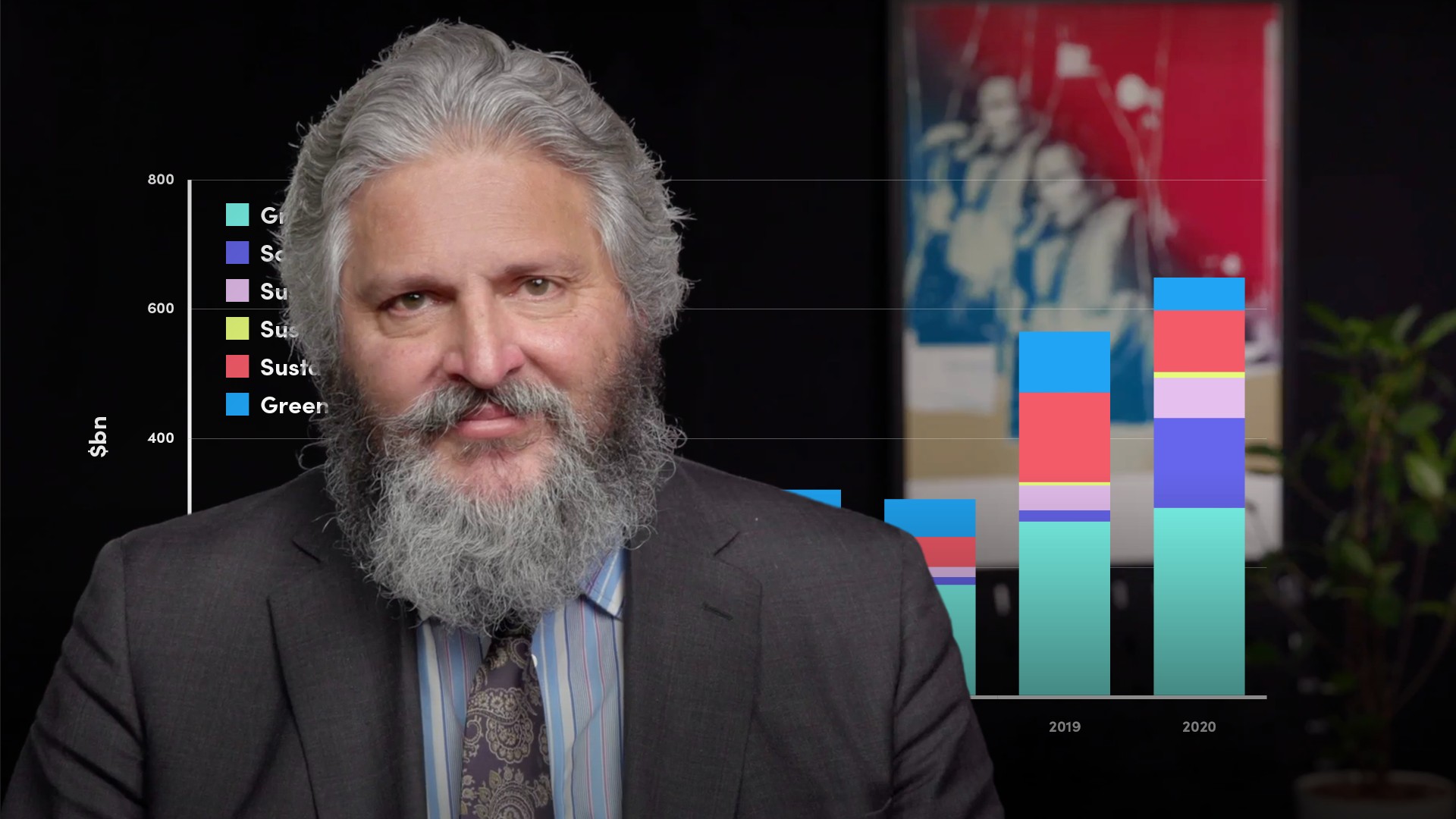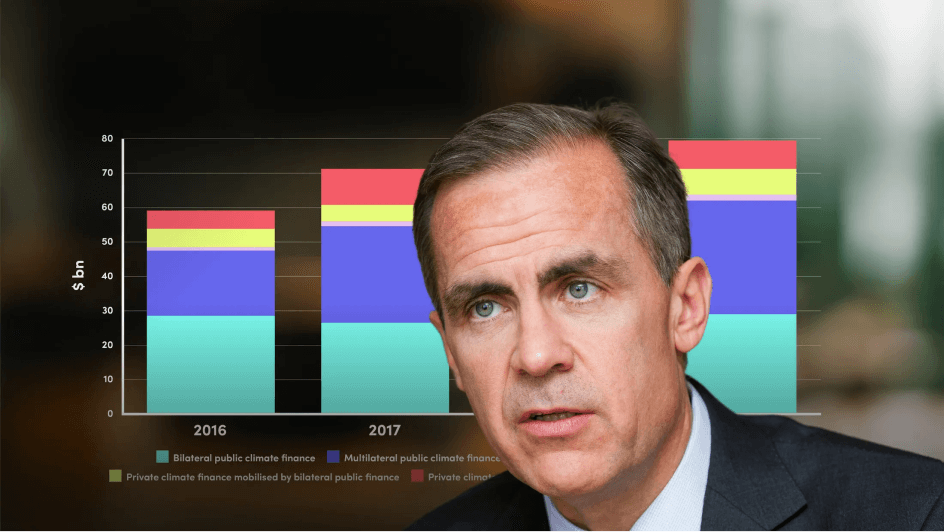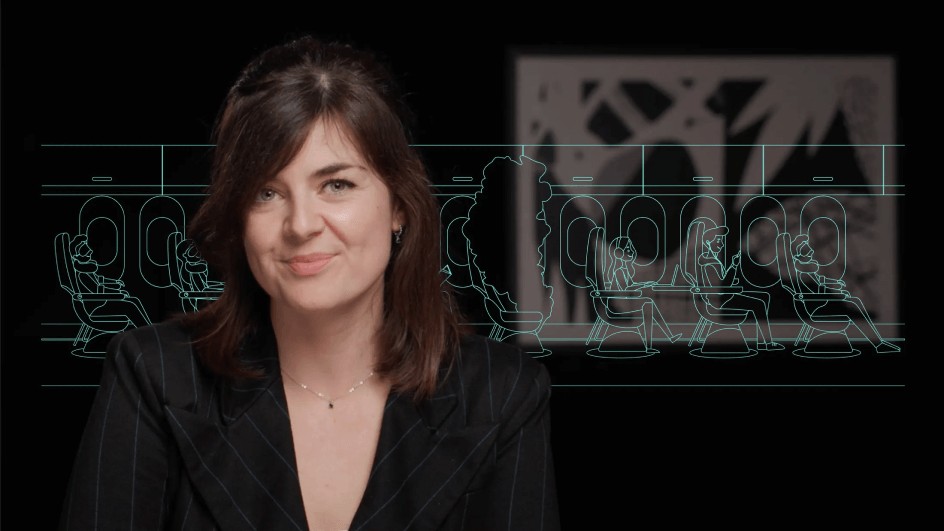
ESG Loans

Keith Mullin
35 years: Capital markets editorial
We saw huge growth in the ESG bond market in 2020, with headlines focused on new COVID-19 sustainable debt issuances. In this video, Keith gives an overview of the parallel growth of ESG loans, which isn’t covered nearly as much by the mainstream media. He also discusses the size of the market and the types of loans, and then finishes by discussing a few recent ESG loan transactions.
We saw huge growth in the ESG bond market in 2020, with headlines focused on new COVID-19 sustainable debt issuances. In this video, Keith gives an overview of the parallel growth of ESG loans, which isn’t covered nearly as much by the mainstream media. He also discusses the size of the market and the types of loans, and then finishes by discussing a few recent ESG loan transactions.
Subscribe to watch
Access this and all of the content on our platform by signing up for a 7-day free trial.

ESG Loans
16 mins 2 secs
Key learning objectives:
Define what an ESG syndicated loan is and who uses them
Explain the types of ESG loans
Outline the codes of each market sub-segment in the ESG capital markets
Understand sustainability-linked loans through the case study of the Italian energy utility, Enel
Overview:
Over the past few years, the environmental, social, and governance (ESG) capital markets have become more significant across a variety of product sets. ESG bonds, which according to Refinitiv witnessed 428 billion dollars in new supply in 2020 up until mid-November, have attracted the most attention. The impressive parallel growth of ESG syndicated loans over a much shorter time frame has received less attention. ESG loans come in two types: green loans, which are use-of-proceeds facilities that finance specific pools of ESG assets; and sustainability-linked loans, known as SLLs. Europe dominates this market, with 70% of global volumes; Asia-Pacific accounts for a little less than 20%.
Subscribe to watch
Access this and all of the content on our platform by signing up for a 7-day free trial.
What is an ESG syndicated loan?
Syndicated loans are large-scale loans extended by a syndicate of banks and, in many cases, institutional investors to single borrowers. They are most typically loans to large and medium-sized corporations and things like infrastructure projects. But there is no limit to who can use this market, and sovereign States and other types of borrower also access this market.
Syndicated loans are very flexible and come in a variety of formats. Borrowers put syndicated bank facilities in place to raise funds for things like acquisitions. A large proportion are stand-by, back-up or contingent credit lines that are not drawn down.
How has the issuance of ESG loans grown over time?
To put some numbers on issuance, ESG loans closed in the first 10 months of 2020 amounted to almost 156 billion dollars, according to Refinitiv. That’s already 8% higher than full-year 2019. Over that period, more than 330 borrowers – companies, sovereigns and projects – closed more than 580 loan tranches. And more than 30 companies signed ESG loans of more than a billion dollars equivalent.
The largest ESG loans in the first 10 months of 2020 were five billion euros each – a term loan for Italian utility ENEL, and for Danish shipping company AP Moeller Maersk.
What form do ESG loans come in?
ESG loans have come in the same varieties and formats as conventional loans, as:
- Short-term facilities
- Bridge loans
- Capex facilities
- Export credits
- Revolving credit facilities
- Standby letters of credit
- Term loans as well as so-called…Schuldschein – which are German unlisted private placements that are technically loans but share bond-like characteristics
ESG loans come in two types:
- Green loans, which are use-of-proceeds facilities that finance specific pools of ESG assets
- Sustainability-linked loans, known by their acronym SLLs. These are general-purpose loans with ESG Key Performance Indicators – or KPIs – written into loan documentation. If borrowers fail to meet targets, beyond the dent to their credibility, lenders are paid a higher return in the form of step-ups in drawn loan margins.
What are the Green Loan Principles (GLP) and what are their four principal components?
- Use of Proceeds
- Process for Project Evaluation and Selection
- Management of Proceeds
- Reporting
How do the Sustainability Linked Loan Principles (SLLP) define sustainability linked loans?
The SLLP defines sustainability linked loans as any types of loan instruments and/or contingent facilities which incentivise borrowers to achieve ambitious sustainability performance objectives. These are measured using Key Performance Indicators – or KPIs, external ratings or equivalent metrics and are designed to improve borrowers’ sustainability footprints.
Subscribe to watch
Access this and all of the content on our platform by signing up for a 7-day free trial.

Keith Mullin
There are no available Videos from "Keith Mullin"





























